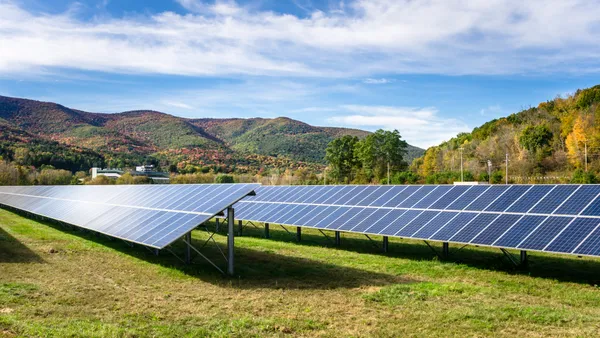Dive Brief:
- Microsoft will rely on wood to build two new data centers in Northern Virginia, slashing its use of steel and concrete, along with its overall carbon emissions, the company announced Thursday.
- The tech giant said its engineers had developed a hybrid construction strategy that would use cross-laminated timber alongside steel and concrete. Data centers built using a combination of the three materials are expected to have a 35% lower carbon footprint than those using conventional steel and 65% lower than those utilizing precast concrete, according to a Microsoft estimate.
- Cross-laminated timber, or CLT, is an “advantageous alternative” to conventional construction materials as it is easy to install and generates little to no waste online, offering a low environmental impact, per nonprofit APA — The Engineered Wood Association.
Dive Insight:
Microsoft said it was updating the contract language related to its data center construction to accelerate decarbonization efforts. These updates include setting low-carbon requirements for materials and equipment being used; selecting a high volume of suppliers that will be required to use completely carbon-free electricity by 2030; and ramping up investments in low-carbon building materials, such as concrete that can permanently trap carbon dioxide and steel whose production is powered by hydrogen.
The computer software provider said CLT, which is already a staple of low-carbon construction in the European Union, has only recently begun to catch traction in the U.S. and is “being put to the test” in what the company believes is “one of the first hyperscale examples of engineered wood in a U.S. datacenter.”
CLT is a lightweight, fire-resistant and prefabricated wood material and can also help in sequestering carbon dioxide from the atmosphere, as its composition allows it to store carbon. According to the U.S. Department of Agriculture, CLT in construction can be leveraged as a greenhouse gas reduction strategy, as buildings built with the material are able to trap and store the carbon during their lifetime.
Hence, CLT serves a greener alternative to traditional construction materials such as steel, cement (a key ingredient in concrete) and aluminum, whose use and production yields a significant carbon footprint, according to the United Nations Environment Programme. The environmental group said in a 2023 report that the buildings and construction sector — which heavily relies on the use of these materials — accounts for a “staggering 37% of global emissions” and is one of the largest emitters of greenhouse gasses.
The utilization of this more sustainable construction material falls in line with Microsoft’s goal to become carbon negative by 2030 and joins a spate of recent initiatives the company has undertaken to work toward its sustainability targets. On its road to carbon negativity, the company also aims to slash over half of its own emissions — both direct and supply chain emissions — by the end of the decade.
In September, Microsoft launched a decarbonization team focused on reducing emissions from its supply chain, a move that builds on the tech giant’s sustainability strategy and sustainable solutions suite. Earlier this year, the tech company expanded that suite with an ESG reporting tool. Microsoft has also signed a landmark carbon removal contract with Stockholm Exergi, a 6-year offtake agreement with Catona Climate and a renewable energy credits purchase agreement with Recurrent Energy in recent months.












